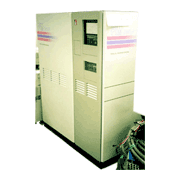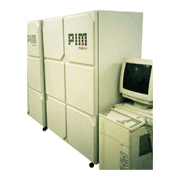In 1982, the Ministry of International Trade and Industry started the Fifth Generation Computer Project. This project was initiated based on the Japanese national policy of developing as a technologically advanced nation while making an international contribution, and was called the "Fifth Generation Computer Project" to convey the idea of technology which was creative and pioneering, even from an international standpoint. The technical goal of the project was "research and development on new computer technology oriented toward knowledge-based information processing". The Institute for New Generation Computer Technology (ICOT) was established as the central promotional organization, and many prototype systems of parallel inference computers were developed to verify and evaluate the many constituent technologies comprised by the technical goal. This system was the world's fastest and largest computer oriented toward knowledge information processing. The system had a large-scale parallel hardware system called a parallel inference machine (PIM), and five PIM models were produced, including the PIM/p comprised of 512 constituent processors, and the PIM/m comprised of 256 constituent processors. Approximately ¥54 billion was invested in the project over 11 years, and it came to an end in 1992.
Today, the PIM/p and PIM/m are preserved at the National Science Museum in Tokyo. The "Fifth Generation Museum" is open to the public at the following website:
http://www.jipdec.or.jp/archives/icot/ARCHIVE/HomePage-E.html



